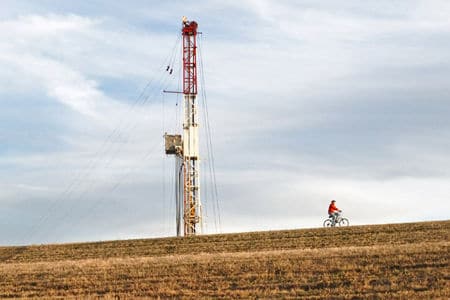“I used to rule the world,
Seas would rise when I gave the word.” – Viva La Vida, Coldplay
I used to get a call from one of our photographers about once a week back in 2006.
“Hey, I just saw a new drilling rig going up on the west side, want me to get a photo?” he’d say.
No, I’d reply, “I’ve got plenty of drilling rig shots.”
That hasn’t happened in a while and it certainly won’t after this week, when industry publication RigData reported no active rigs in Barnett Shale. Zero.
No active rigs? In 2008, the Texas Railroad Commission reported 4,065 drilling permits were filed in the Barnett Shale, the geological formation that stretches from the city of Dallas west and south, covering 5,000 square miles and at least 18 counties. So far in 2016, the Railroad Commission reports 16 in the first quarter. You can do the math.
I titled my first big story on the Barnett Shale, with a little trepidation, I must admit, “Boom.” I shouldn’t have been so timid. It was a boom and like any boom, what inevitably followed was a bust, as I titled this piece.
As in any bust, the only ones who seem to be smiling are the bankruptcy lawyers. They’re busy.
Even though drilling in the Barnett Shale has been hovering in the single digits for some time, zero has to hurt.
“I’m not at all surprised,” said Will Brackett, managing editor of the Powell Shale Digest, an industry newsletter that began in the heyday of the Barnett Shale. “It’s been close to there for about a year, as drilling activity continued to fall nationwide in wake of low energy prices.”
While drilling has stopped, natural gas production in the Barnett Shale has not. Reaching a high of 5.7 billion cubic feet per day in 2012, production is at 3.8 billion cubic feet per day currently, according to the Railroad Commission – still well above the 216 million cubic feet per day being produced in 2000.
The Barnett Shale was in many ways a victim of its own success. The shale here produced primarily natural gas. As the supply increased, prices fell rapidly. Then the Barnett Shale producers began to take the technology they developed here and apply it to other shale rich areas. And they began to apply those technologies to extract oil from those other shale rich areas too, something they couldn’t do in the Barnett.
“The Barnett Shale was the first,” said Brackett, “but I doubt we’ll see it return to those highs again in our lifetime.”
For Brackett, the timing also seemed right to shut down the newsletter that began as a labor of love by industry veteran Gene Powell and turned into the industry equivalent of “TMZ.” Companies, analysts, drilling veterans – to say nothing of those of us in the Fourth Estate – eagerly awaited the newsletter to read the latest on the shale plays, catch up on industry events, seek news tips, pursue the opinions and wisdom of the loquacious, intelligent Powell and scour what new data Powell unearthed. The newsletter’s final edition was April 26. As they say in the newspaper business, “-30-.”
“For us to end when the Barnett Shale is at zero,” said Brackett, “it seems appropriate.”






